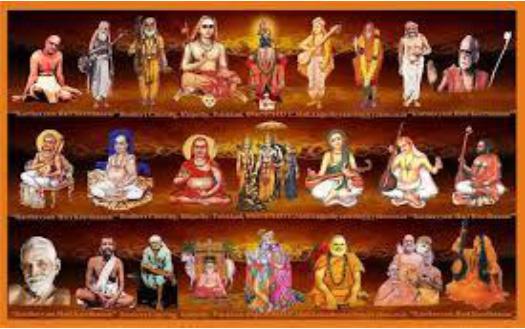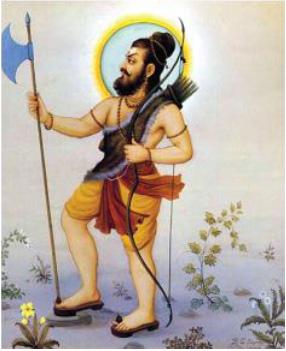October 2016
Newsletters

Rameshwaram, The Anchor of Indian Renaissance – 8
Pilgrimage was almost mandatory in the sadhana of almost all sages. We have examples of some sages who went barefoot all over the land more than once in their lives. Pilgrimage was a way of learning life and culture of this vast land having unity in diversity, of meeting other like-minded people, sharing and at times debating with them on Vedanta. Quoting Swami Vivekananda, (Sages of India, vol 3 CW: Colombo to Almora)
‘This is a peculiarity which we have to understand — that our religion preached an Impersonal Personal God. It preaches any amount of impersonal laws plus any amount of personality, but the very fountain-head of our religion is in the Shrutis, the Vedas, which are perfectly impersonal; the persons all come in the Smritis and Puranas — the great Avataras, Incarnations of God, Prophets, and so forth. And this ought also to be observed that except our religion every other religion in the world depends upon the life or lives of some personal founder or founders.’


Parasurama’s Episode and Sanctity of of Thirthams at Rameshwaram
Parasurama is understood to be the sixth Avatara of Vishnu and placed as second incarnation in Tretayuga just before Rama. In accordance with some of the Samhitas, he is the sixteenth incarnation of Vishnu among his 24 forms. It is the only Avatara in which Vishnu prolonged his physical presence on earth for more than one Yuga. His Personality and his association with Rama, Krishna and Balarama is a unique characterisation ever described in the Itihasa and Puranas. Unlike the earlier avataras, this was a full Avatara extending to atleast two yugas and considered as the Chiranjivi (immortal) blessing the human race. Having born to Jamadagni Rishi one of the Sapta Rishies and Renuka, he inherited the quality of steadfastness and valour to the full level and became the disciple of Siva and said to have learned the art of warfare from him. Siva even parted with his unique weapon Parasu.
In the civilization of mankind, Parasurama incarnation signifies many facets of changes and have archaeological, ethnical, cultural, social and spiritual recorded evidences. Being placed as in between the earlier rulers of Asura dynasty (Mahabali) and the perfect man of righteousness (Rama) he bridges many gaps. It is not very clear from scriptures whether in the earlier Avataras Vishnu ever became mortal in all respects with positive energy like steadfastness and obeying the commands in Vedas as strictly as Parasurama did it. In fact his actions provide sufficient conjectural materials to trace the evolution of the Pan Indian culture and find him as the Saviour of weakest of the period. He bridges the gap between the elites and common man, brahminical and native worship, teacher and taught sophisticated warfare and tribal attack, Siva and Vishnu and witnesses the events in the history of mankind.

Renovation of Traditional Water Bodies (TWB) – Brahma in the Island of Rameshwaram

Background: Research into mythological texts enabled us to identify the lost and damaged traditional water bodies – Teerthams. The survey maps and interaction with the locals helped in restoring and renovating the Teerthams without damaging environmental/societal norms or antiquity. Renovated Teerthams has been handed over to “Teertha mitras”, a community group after bringing back to its original glory. We have identified 64 traditional water bodies (Teerthams) in and around Rameswaram Island. Twenty traditional water bodies outside the temple revived and renovated. So far, 8.5 million litres of water storage created to recharge ground water. Twenty thousand villagers and about one lakh tourists are benefitted. This process has enabled to revive Kudimaramathu system for protecting traditional water bodies. In future, it will become a tourist and pilgrim destination generating employment opportunities for the local stakeholders. This note gives an account of renovation efforts of Brahma (Kunda) Teertham relating to location, mythological values, on revival of traditional water bodies for posterity. Location: Brahma teertham is at Mangad Village of Ramesharam Island. This newly renovated Teertha has brackish water (salt water). However, in the coming couple of years it will become potable water at least for a period of 6-8 months in a year.

Hand in Hand India 2016
Events for the month of October 2016
Awareness Programme at Meyampuli in M.U.P.School on 07-10-16 about 110 students participated


Nakshatra Vanam

Uttara-bhadrapada (Uthirattadhi), Jack Fruit Tree
The jackfruit is most probably a native of the rain-forests of the Western Ghats. Jackfruit is a tree which is unique in the fact that it produces huge fruits directly from its stem. In fact, the name jackfruit is derived from the Tamil name palaa. The tree is handsome and stately, 30-70 ft tall, with evergreen, alternate, glossy, somewhat leathery leaves are long, oval on mature trees, sometimes oblong or deeply lobed on young shoots. All parts contain sticky, white latex. Short, stout flowering twigs emerge from the trunk and large branches, or even from the soil-covered base of very old trees. Tiny male flowers are borne in oblong clusters 2-4 in length; the female flower clusters are elliptic or rounded. The largest of all treeborne fruits, the jackfruit tree may be 3 – to 8 ft. long and 6 – 20 ft. wide, and the weight ranges from 10 – 50 kgs. The “rind’ or exterior of the compound or aggregate fruit is green or yellow when ripe and composed of numerous hard, cone-like points attached to a thick and rubbery, pale yellow or whitish wall.

